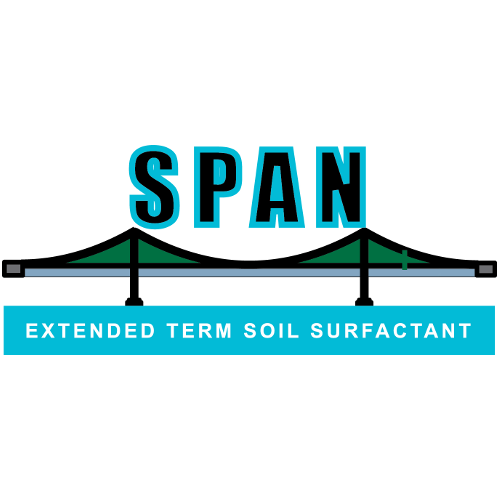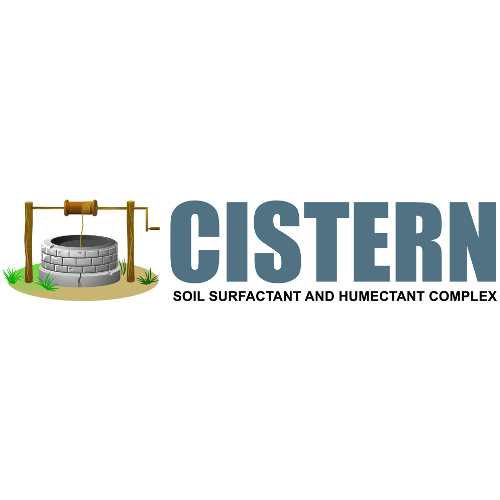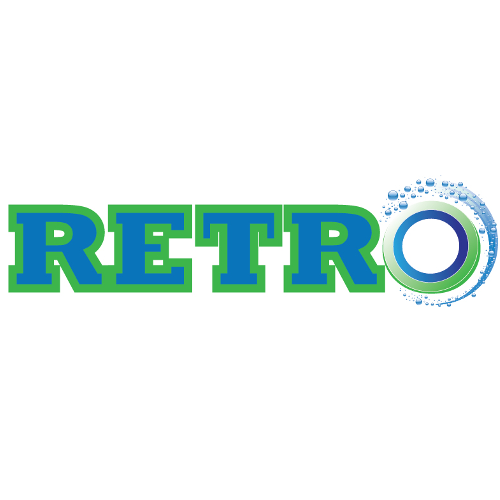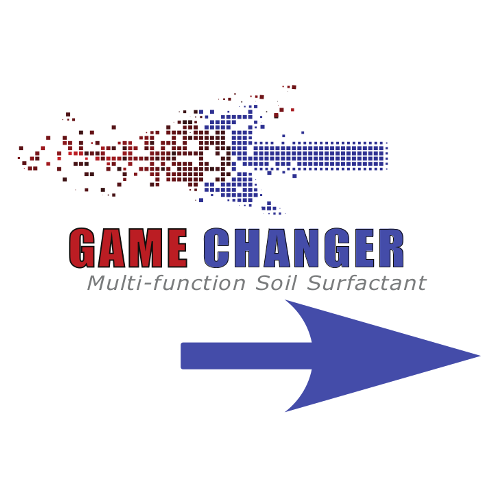SPAN is a specialized extended term soil surfactant formulation designed to provide an economical, long-term solution to water repellent soils resulting in improved uniform water movement, distribution, retention, drainage and air: water ratios soils for approximately 120 days!
Span Extended Term Soil Surfactant
Description
The use of surfactants to reduce soil hydrophobicity (water repellency) and decrease localized dry spots is now a proven and well-accepted turfgrass management practice. However, for many surfactants to be effective, they must be applied on a monthly or even shorter frequency schedule during critical summer stress periods that may last four or more months.
Regardless of the efficacy of a surfactant, how long it will maintain its promised performance is usually determined by how rapid its polymer structure is degraded by microbes and chemical interactions in the soil profile. Oftentimes, the required frequency of applications needed to overcome microbial decay of these shorter-term products makes use of these surfactants unfeasible.
New Dimension in Surfactant Chemistry
At the heart of the SPAN’s extended term soil surfactant technology is a new copolymerization process that allows selected surfactant candidates to be grafted onto a large fully functional surfactant parent molecule in a manner similar to branches on a tree. This branched configuration of independent copolymer surfactants allows the final product to be “tuned” for increased surfactant performance as well as provide a means to compensate for microbial degradation of the surfactant’s structure — the primary cause of performance decay.
Overcoming Microbial Barriers to Long-Term Performance
Unlike surfactants whose surfactant characteristics are terminated when disassociated by the cleavage of their molecular structure (including “long-term” surfactants), the SPAN’s branched chain molecule is constructed in a manner that allows surfactant branches to be removed from the parent surfactant molecule, attach to water repellent sites on soil particles and retain their surfactant activity.
Once attached to hydrophobic areas on the soil particle surface, the copolymers establish new sites of hydration. This greatly extends the time that SPAN will continue to provide improve hydration on water repellent soils. It should be noted that the parent molecule also retains its surfactant structure and activity – even when all its “branches are removed.
Directions
Greens, Tees, Fairways, Lawns and Sports Turf
Localized Dry Spot and Water Repellency Conditions:
SPAN L Formulation: Apply SPAN L as a preventive program. SPAN L should be applied in two applications. Apply at 8 ounces per 1,000 sq. ft. (240 ml. per 100 sq. meters). Wait for 7 to 30 days to reapply second application.
Under the two split applications SPAN L should be sprayed at 8 ounces per 1,000 sq. ft. (240 ml. per 100 sq. meters) and should be applied in 2 gallons of water per 1,000 sq. ft. (8 liters of water per 100 sq. meters) spray solution.
SPAN L can also be applied at 16 ounces per 1,000 sq. ft. (480 ml. per 100 sq. meters) in 5 gallons of water per 1,000 sq. ft. (20 liters of water per 100 sq. meters).
SPAN G Formulation: Apply LT 120 G as a preventive program. Granular rates can be two split applications at 3.5 lbs per 1,000 sq. ft. each (1.6 kilograms per 100 sq. meters).
SPAN G can be applied in one application at 7.0 lbs. per 1,000 sq. ft. (3.2 kilograms per 100 sq. meters). Irrigation should be applied after application to remove LT 120 G from the leaf surfaces.
SPAN G is safe on turf.





